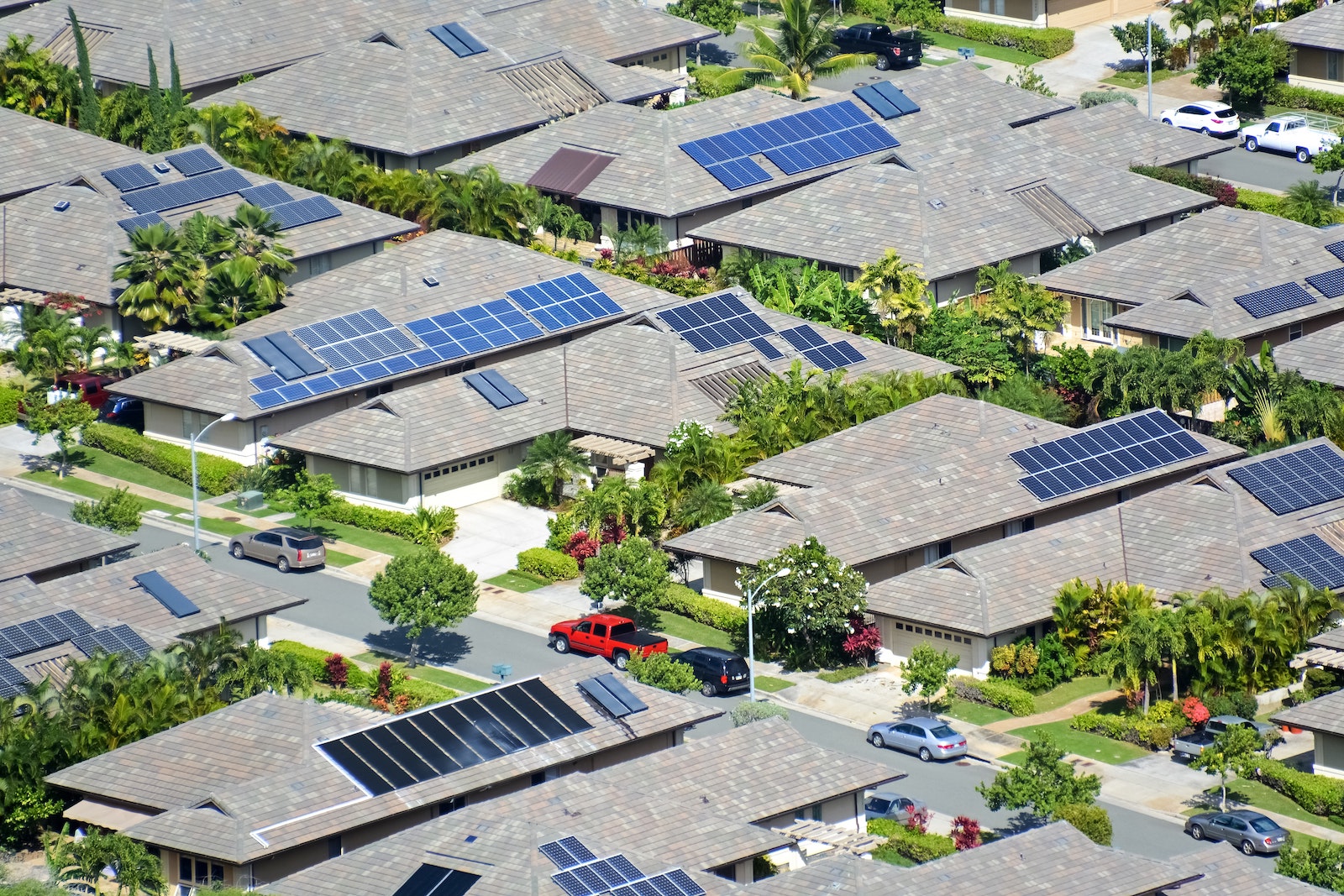The building sector plays a significant role in global carbon emissions, accounting for nearly 40% of energy-related CO2 emissions. As the world strives to combat climate change, finding sustainable solutions for the construction and operation of buildings is crucial. This is where sustainable finance comes into play, offering innovative ways to decarbonize the building sector and create a more sustainable future.
In this article, we will explore the concept of sustainable finance and its role in decarbonizing the building sector. We will delve into various financial instruments, initiatives, and strategies that can drive sustainable building practices. Let’s dive in!

Understanding Sustainable Finance
Sustainable finance refers to the integration of environmental, social, and governance (ESG) factors into financial decision-making processes. It aims to support the transition to a more sustainable and low-carbon economy by redirecting capital flows towards environmentally friendly projects and activities.
The building sector, being a significant contributor to carbon emissions, has become a focal point for sustainable finance initiatives. By providing financial incentives, tools, and frameworks, sustainable finance aims to encourage the adoption of sustainable building practices and the reduction of carbon footprints.
The Benefits of Decarbonizing the Building Sector
Decarbonizing the building sector offers numerous benefits, both in terms of environmental sustainability and economic viability. Let’s explore some of the key advantages:
- Reduced Carbon Emissions: By implementing sustainable building practices, we can significantly reduce carbon emissions associated with the construction and operation of buildings. This contributes to global efforts in mitigating climate change and achieving carbon neutrality.
- Energy Efficiency: Sustainable buildings are designed to optimize energy use through efficient insulation, lighting, and heating/cooling systems. This leads to lower energy consumption, reduced utility costs, and improved overall energy efficiency.
- Health and Well-being: Sustainable buildings prioritize indoor air quality, natural lighting, and occupant comfort. This promotes better health and well-being for occupants, resulting in increased productivity and satisfaction.
- Resilience and Adaptability: Sustainable buildings are designed to withstand and adapt to the impacts of climate change. This includes measures to address extreme weather events, rising sea levels, and other climate-related risks.
- Market Competitiveness: As sustainability becomes a key consideration for businesses and consumers, sustainable buildings gain a competitive edge. They attract tenants, investors, and buyers who prioritize environmentally responsible practices.
Financial Instruments for Sustainable Building
To drive sustainable building practices, various financial instruments have been developed. These instruments provide capital, incentives, and frameworks to support the transition towards sustainable construction and operation. Here are some key financial instruments:
1. Green Bonds
Green bonds are debt instruments specifically issued to finance environmentally friendly projects. These projects could include energy-efficient buildings, renewable energy installations, or sustainable infrastructure. By investing in green bonds, investors can support the decarbonization of the building sector while earning a return on their investment.
2. Energy Performance Contracts
Energy performance contracts (EPCs) are agreements between building owners and energy service companies (ESCOs) to improve energy efficiency. Under these contracts, ESCOs implement energy-saving measures and are paid based on the energy savings achieved. EPCs provide upfront financing for building retrofits, enabling energy efficiency improvements without requiring initial capital from building owners.
3. Green Mortgages
Green mortgages offer favorable terms and conditions for financing energy-efficient homes or buildings. Lenders provide lower interest rates, longer repayment periods, or increased loan amounts to incentivize borrowers to invest in sustainable building practices. Green mortgages make sustainable buildings more affordable and encourage their widespread adoption.
4. Property Assessed Clean Energy (PACE) Financing
PACE financing allows property owners to finance energy-efficient upgrades through a property tax assessment. The financed amount is repaid over time as an addition to the property tax bill. PACE financing eliminates the need for upfront capital and ensures that energy-saving investments are paid for over the useful life of the improvements.
5. Sustainability-Linked Loans
Sustainability-linked loans are structured to incentivize borrowers to achieve predetermined sustainability targets. These targets could be related to energy efficiency improvements, carbon footprint reductions, or other sustainability metrics. If the borrower meets the targets, they receive favorable interest rates or other financial benefits.

Sustainable Finance Initiatives in the Building Sector
Several initiatives and programs exist to promote sustainable finance in the building sector. These initiatives aim to standardize sustainable building practices, provide guidelines for financial institutions, and facilitate the flow of capital towards sustainable projects. Let’s explore some prominent initiatives:
1. Leadership in Energy and Environmental Design (LEED)
LEED is a globally recognized rating system for sustainable buildings. It provides a framework for designing, constructing, and operating green buildings. LEED-certified buildings meet strict criteria related to energy efficiency, water conservation, materials selection, and indoor environmental quality. LEED certification enhances the marketability and value of sustainable buildings.
2. Green Building Certification Institute (GBCI)
The GBCI is an independent organization that administers certifications for sustainable building initiatives, including LEED certification. It ensures that buildings meet the required standards and provides third-party verification of sustainability claims. GBCI certifications provide credibility and assurance to investors and stakeholders.
3. Task Force on Climate-related Financial Disclosures (TCFD)
The TCFD is an initiative aimed at promoting transparency and disclosure of climate-related financial risks and opportunities. It provides guidelines for companies and financial institutions to assess and disclose climate-related risks and their impact on financial performance. By incorporating climate-related disclosures, investors can make more informed decisions regarding sustainable investments.
4. Global Real Estate Sustainability Benchmark (GRESB)
GRESB is a global benchmark for assessing the sustainability performance of real estate portfolios. It measures various environmental, social, and governance factors to evaluate the sustainability practices of real estate companies and funds. GRESB scores enable investors to compare the sustainability performance of different real estate investments.
Strategies for Decarbonizing the Building Sector
Decarbonizing the building sector requires a comprehensive approach that combines various strategies. Here are some key strategies that can accelerate the transition towards sustainable buildings:
- Energy Efficiency Improvements: Implementing energy-efficient technologies and practices is essential for reducing energy consumption in buildings. This includes using LED lighting, optimizing insulation, installing smart controls, and promoting renewable energy generation on-site.
- Renewable Energy Integration: Incorporating renewable energy sources, such as solar panels or wind turbines, can help buildings generate clean energy and reduce reliance on fossil fuels. Net-zero energy buildings, which generate as much energy as they consume, are an ultimate goal for sustainable building practices.
- Circular Economy Principles: Embracing circular economy principles in the construction and operation of buildings can minimize waste generation and promote resource efficiency. This includes using recycled materials, adopting modular construction techniques, and implementing effective waste management practices.
- Green Infrastructure: Integrating green infrastructure, such as green roofs, rainwater harvesting systems, and urban gardens, can enhance the sustainability of buildings. Green infrastructure improves stormwater management, reduces urban heat island effects, and provides additional benefits to occupants and the environment.
- Collaboration and Knowledge Sharing: Collaboration among stakeholders, including developers, architects, financial institutions, and policymakers, is crucial for driving sustainable building practices. Sharing knowledge, best practices, and lessons learned can accelerate the adoption of sustainable solutions and facilitate the transition towards a low-carbon building sector.
Conclusion
Sustainable finance has the potential to revolutionize the building sector by promoting environmentally friendly practices and decarbonizing the industry. Through financial instruments, initiatives, and strategies, we can create a future where buildings are not only energy-efficient but also contribute to a healthier planet.
By embracing sustainable building practices and leveraging the power of sustainable finance, we can pave the way for a more sustainable and resilient built environment. Let’s work together to decarbonize the building sector and build a greener future for generations to come.
